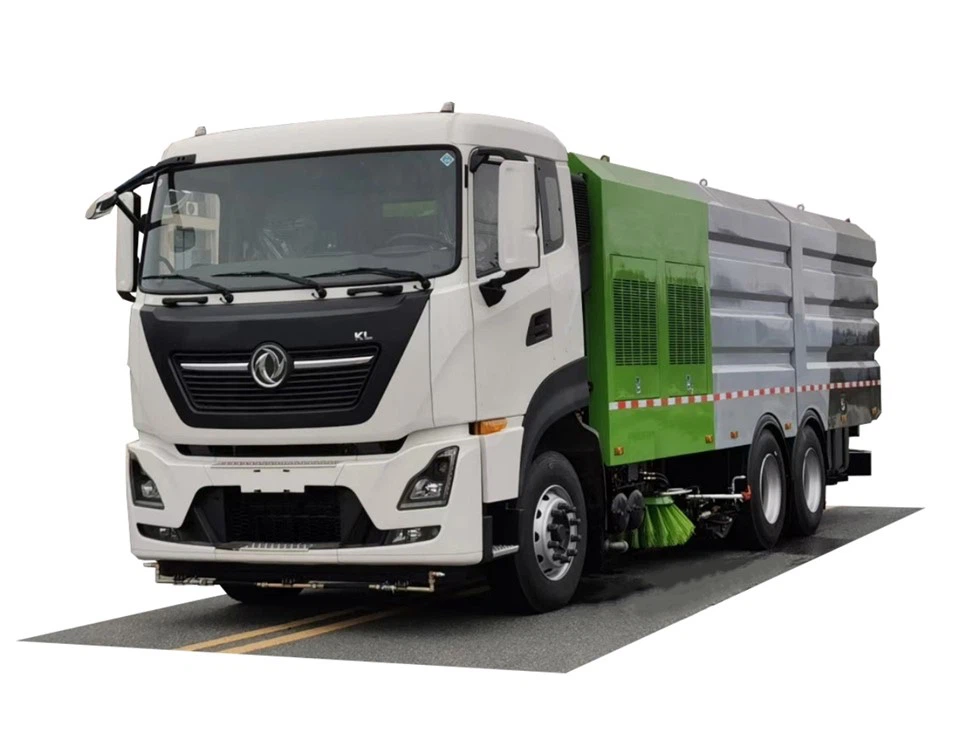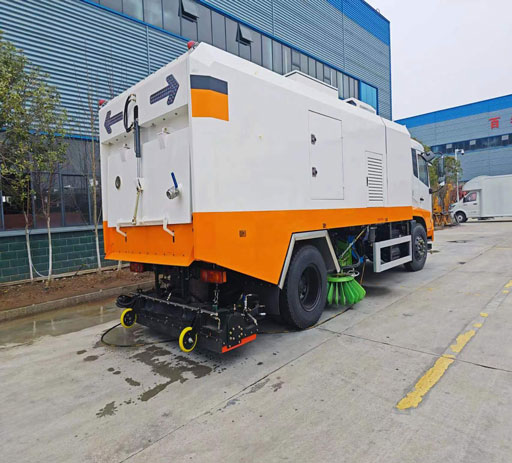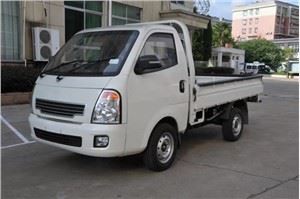Side loader garbage trucks represent a significant advancement in waste management technology. These specialized vehicles are designed to enhance efficiency, safety, and operational effectiveness in collecting waste. This article delves into the intricacies of side loader garbage trucks, examining their features, advantages, challenges, and practical tips for effective use.
What is a Side Loader Garbage Truck?
Side loader garbage trucks are vehicles engineered with a mechanical arm situated on the side to lift and empty waste containers. Unlike rear-loader trucks, which require refuse workers to walk to the back of the truck, side loaders enable operators to collect waste efficiently from a seated position, significantly improving safety and speed.
Types of Side Loader Garbage Trucks
The main types of side loader garbage trucks include:
- Automated Side Loaders: These trucks utilize hydraulic mechanisms to lift and dump bins automatically, minimizing human interaction.
- Manual Side Loaders: These require occasional manual assistance, but most operations can still be managed from the driver’s seat, providing improved safety.
- Half Side Loaders: These trucks typically feature an operational arm on one side, allowing for automated collection while still being versatile.
Key Features of Side Loader Garbage Trucks
1. Mechanical Arm and Lifting Mechanism
The mechanical arm is the hallmark of side loader garbage trucks, designed to reach across the vehicle to grab bins. The lifting mechanism varies but generally includes hydraulics that enable high efficiency and smooth operation.
2. Driver’s Cabin Design
Many side loaders come with ergonomic cabins that provide drivers with a clear view of the surrounding area, ensuring safer navigation and waste collection. Controls are typically arranged intuitively to allow for easy operation of the collection arm and vehicle functionalities.
3. Waste Bin Compatibility
These trucks are designed to work with standardized waste bins, allowing municipalities and businesses to easily adopt and integrate side loaders into their existing waste management systems.
4. Safety Features
Safety features include rear and side cameras, alarms, and shields around the lifting arm to protect bystanders and operators. Many models also come equipped with advanced braking systems to prevent accidents during operation.
5. Environmental Considerations
Modern side loader garbage trucks often include features to reduce emissions and noise. Electric or hybrid models are becoming increasingly popular and align with eco-friendly waste management strategies.
Advantages of Side Loader Garbage Trucks

1. Enhanced Safety for Workers
By allowing waste collection from the driver’s seat, side loaders reduce the need for workers to leave the vehicle, minimizing the risk of accidents and injuries.

2. Improved Efficiency
The automated nature of side loaders allows for quicker collection times. A side loader can service several stops in the same time it might take a rear loader to complete fewer stops.
3. Minimized Labor Costs
Fewer workers are needed to operate side loaders as compared to traditional collection methods. This reduction in labor can lead to significant cost savings for cities and waste management companies.
4. Better for Urban Areas
With their compact design and ability to maneuver in narrow streets, side loaders are particularly well-suited for urban environments where space is limited.
5. Environmental Impact
The development of cleaner, silent models contributes to reducing the overall carbon footprint of waste collection processes, aligning with growing environmental concerns.
Challenges Associated with Side Loader Garbage Trucks
1. Initial Cost
Purchasing side loader garbage trucks can require a significant initial investment compared to more traditional options. However, the long-term savings can justify the cost.
2. Maintenance and Repairs
As with any specialized equipment, maintenance can be more complex and costly due to the mechanical arms and hydraulic systems. Regular inspections and servicing are essential to keep the vehicles operational.
3. Training Requirements
Operators may require additional training to safely and effectively operate side loader garbage trucks, particularly automated models. Investing in sufficient training is crucial for maximizing productivity.
4. Not Suitable for All Locations

While side loaders excel in urban environments, they may not be suitable for rural areas with unpaved or narrow roads where accessibility becomes a challenge.
Best Practices for Operating Side Loader Garbage Trucks
1. Regular Maintenance
Implement a regular maintenance schedule to check the hydraulic systems, mechanical arms, and overall vehicle health. This practice can prevent breakdowns and prolong the vehicle’s lifespan.
2. Proper Training
Ensure that operators are thoroughly trained on the specific models being used, including how to troubleshoot minor issues and how to use all the safety features effectively.
3. Route Optimization
Plan efficient routes to minimize fuel consumption and maximize productivity. Use software tools to analyze traffic patterns and strategize collection times.
4. Safety Protocols
Develop and enforce safety protocols. Regularly review these policies with the team, particularly when introducing new staff or equipment.
Practical Examples of Side Loader Garbage Truck Use
1. Municipal Waste Management
Many cities have adopted side loader garbage trucks for residential waste collection due to their efficiency and safety features. For instance, the City of San Diego implemented side loaders and noted a reduction in labor costs and an increase in service satisfaction among residents.
2. Commercial Use
Large retail centers and industrial parks utilize side loaders for their waste collection needs due to their ability to handle heavy loads and navigate tight spaces. For example, Walmart has integrated side loader trucks into its waste disposal processes, enhancing overall efficiency.
3. Sustainable Practices
Some companies are using side loader garbage trucks as part of their sustainability initiatives. For example, firms that operate fleets of electric side loaders are not only reducing their carbon footprint but also benefiting from lower operational costs.
Future Trends in Side Loader Garbage Trucks
1. Electric and Hybrid Models
As environmental concerns continue to grow, more manufacturers are focusing on producing electric and hybrid side loader garbage trucks, reducing reliance on fossil fuels and emissions.
2. Smart Technology Integration
The integration of smart technology such as GPS tracking, route optimization software, and health monitoring systems is becoming common. These technologies enhance operational efficiency and allow for real-time data collection and analysis.
3. Enhanced Safety Systems
Future models are expected to incorporate advanced safety features such as collision detection systems, automated braking, and even AI-driven controls to enhance safety further.
FAQ Section
1. What is the average cost of a side loader garbage truck?
The average cost can vary significantly between models and brands, typically ranging from $250,000 to $500,000 depending on features and specifications.
2. How often should side loader garbage trucks be serviced?
Regular servicing every 3 to 6 months is recommended, depending on usage, to ensure optimal performance and safety.
3. Can side loader garbage trucks operate in snow or heavy rain?
Yes, but operators should exercise caution. Proper training on handling adverse weather conditions is crucial for safe operations.
4. What maintenance issues are most common with side loader trucks?
The most typical maintenance issues involve the hydraulic systems, mechanical wear and tear on the arm mechanism, and electrical system failures.
5. Are there financing options available for purchasing side loader garbage trucks?
Yes, many manufacturers and dealerships offer financing options, leasing programs, or tailored solutions for public sectors and private waste management companies.
6. How do side loader garbage trucks improve waste collection efficiency?
They enhance efficiency by allowing drivers to collect waste while remaining in the cabin, reducing downtime and increasing the number of pickups per route.